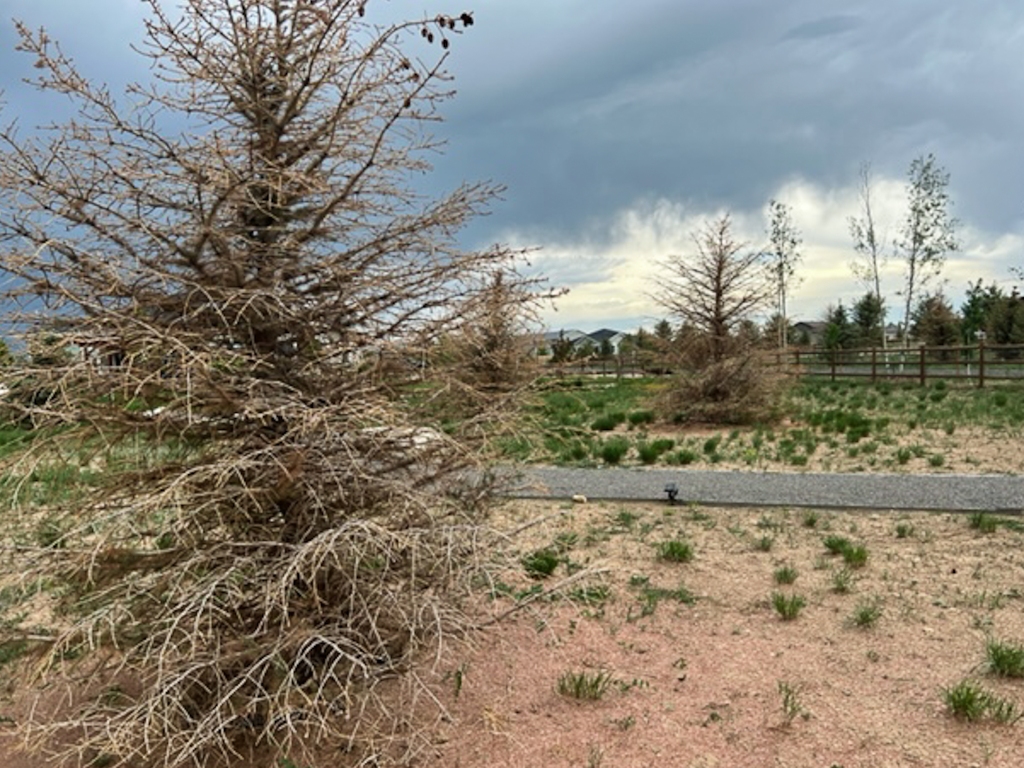
Want to thicken your lawn? Early September is an ideal time to do it in Colorado.
When planting seed, many homeowners rough up the soil a little, drop seed, cover the seed, and keep the area well-watered for about two weeks, giving the seeds time to germinate. In the meantime, no one can walk on the area and the seeds may be eaten by birds.
Want to know how professionals overseed football fields? I learned this method from Dr. Tony Koski, Colorado State University Turfgrass Science professor, when I went through master gardener training.
I’ve used this method many times since. It works. And you can even walk on the area while the grass is being established.
Here are the steps:
*Buy high-quality grass seed at a reputable nursery. It’ll have a higher germination rate and fewer weeds than the stuff you buy at the big box stores.
*Aerate your lawn in late August or early September.
*Using a seed spreader to distribute the seed over the ground. Then drag a metal rake with the tines facing skyward behind you around the yard, knocking the seeds into the aeration holes. (OK, professionals may use fancy equipment to do all this, but you can get the same results with a rake.)
*Top dress the lawn by sprinkling compost here and there and using a rake to spread it evenly. Then drag your rake again, tines up, behind you to knock some of the compost into the aeration holes, which act as germination chambers. These below-ground chambers protect the seeds from foot traffic.
*Water the seed about twice a day for two weeks. That’s how long it takes for many grass seeds to germinate. It’s crucial not to let the seed dry out because a dried seed is a dead seed. After germination, you can cut back on watering to maybe two times a week, depending on how high temperatures get and whether it rains in the meantime.
*When it comes time to mow, don’t go lower than three inches in height. Taller grass reduces the amount of sunlight reaching the ground and helps choke out weeks.
So there you have it—the secret to growing a lush lawn. Keep your yard watered, but don’t overdo it. Water infrequently and deeply to encourage deep root growth. I water about twice a week when temperatures are above 85 and there’s no rain. Otherwise, I water about once a week in the areas that receive the most sun.
















